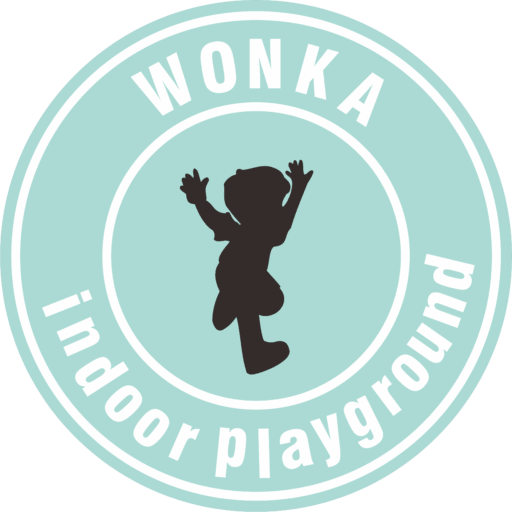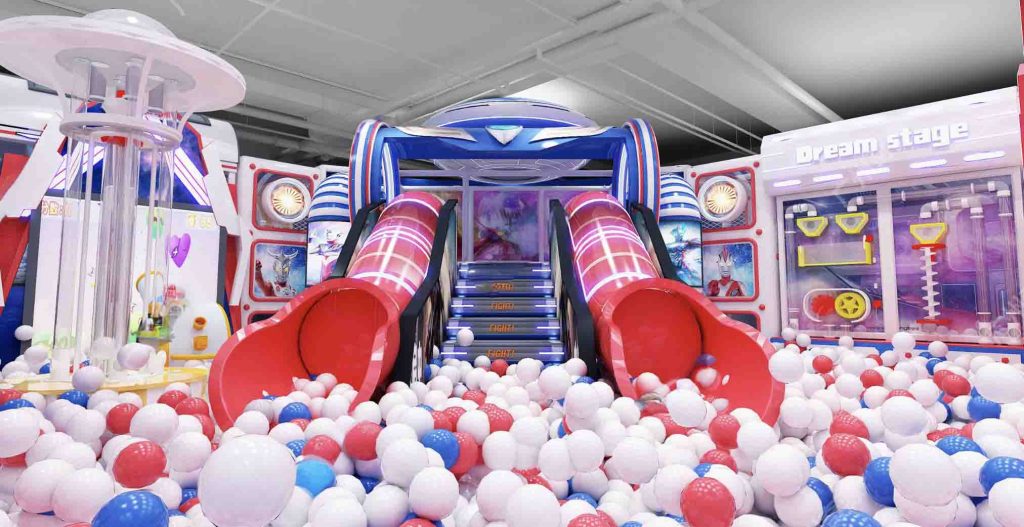Opening an indoor playground is not just a matter of space and decoration—it starts with choosing the right equipment. Your equipment determines how many children you can serve, what age groups you can attract, what ticket prices you can charge, and how likely parents are to return. Yet for many investors, this critical step is often rushed or based on visuals rather than business logic.
In this guide, we will walk you through every major consideration when selecting commercial indoor playground equipment in 2025. Whether you’re opening your first play center or expanding an existing FEC, this article will help you avoid costly mistakes and choose structures that drive profits.
1. Start with a Clear Business Model
Before browsing catalogs or talking to suppliers, define your goals clearly. Your equipment should be chosen to match your:
- Target age group (toddlers, 4–10 years, or mixed)
- Business location (mall, warehouse, mixed-use complex)
- Foot traffic and customer volume
- Ticket pricing strategy
- Operational style (open play, birthday bookings, private events)
✅ A small neighborhood play center may benefit from cozy, low-height equipment optimized for parent supervision.
✅ A large FEC in a tourist zone needs layered, high-capacity adventure zones with big visual appeal.
2. Understand the Major Equipment Categories
There are many subtypes of indoor playground components. The most common include:
- Soft Play Modular Structures
Multi-level frameworks with slides, tunnels, nets, bridges, ball pits, and climbing sections. Typically the centerpiece of any playground. - Toddler Zones
Smaller padded areas with age-appropriate activities like rocking animals, mini-slides, foam blocks, and low barriers. - Trampolines and Foam Pits
For older children (6+). Often used to extend playtime and diversify age appeal. - Interactive Projection Games
Wall or floor-based motion games using projectors and sensors. Excellent for modernizing older layouts. - Ninja Courses & Obstacle Zones
Designed for ages 7+. Adds competitive and skill-based play. - Roleplay Rooms
Small themed zones like mini kitchens, medical clinics, supermarkets. Great for parent-child interaction. - Ball Cannons & Interactive Panels
Add motion, excitement, and replay value to larger setups.
Knowing what category serves which function will help you build a balanced space that supports diverse usage.
3. Space Planning and Flow Optimization
Many new investors focus too heavily on the equipment list and not enough on how children will move through the space. But poor spatial planning leads to overcrowding, bottlenecks, underused corners, and safety hazards.
Key design principles include:
- Zoning by age group: Keep toddlers separate from older kids to prevent collisions and encourage longer playtime.
- Clear entrance visibility: Parents should be able to see most of the playground from the waiting or café area.
- Central circulation loop: Create natural paths that pull children through all zones instead of letting them crowd one area.
- Avoid long dead-ends: Kids will abandon zones they can’t easily reach or exit.
📏 Ideal ceiling height:
- For 2-level structures: minimum 3.2–3.5 meters
- For 3-level structures: at least 4.5 meters
4. Equipment Sizing and Capacity Planning
Choosing equipment that looks good in a catalog is different from fitting it into your business model. Ask:
- What is my hourly capacity target?
Multiply expected foot traffic by average dwell time to estimate required throughput. - How many children can play at the same time per module?
A double-lane spiral slide can handle 20–25 kids/hour. A ball pit might accommodate 10–12 comfortably. - What’s my layout-to-revenue efficiency?
You need a balance between spectacle and usable volume.
General benchmarks:
- 1 m² per child for active zones
- 2.5–3 m² per child for total layout (including walkways, café, etc.)
🧠 Example: A 300 m² playground optimized for 100 children/hour requires smart zoning, not just massive structures.
5. Selecting the Right Supplier
Not all suppliers are created equal. In 2025, most commercial soft play equipment is manufactured in China, Turkey, or Eastern Europe. Your supplier is more than just a seller—they shape your customer experience and liability exposure.
Checklist to qualify a supplier:
✅ Can they provide real photos or videos of past projects?
✅ Do they offer 3D rendering and layout plans?
✅ Are they compliant with EN1176, ASTM F1918, or local child safety standards?
✅ Is installation included in the quote?
✅ What warranty terms are included?
✅ Can they support custom branding or theming?
🎯 A good supplier works like a design consultant—not just a box shipper.
6. Material Quality and Durability
Indoor playgrounds take daily abuse. Kids jump, kick, chew, climb, and throw—your equipment must withstand years of physical stress without fading, tearing, or breaking.
Key materials and what to look for:
- Steel frames: Should be thick-gauge, powder-coated, and corrosion-resistant. Avoid lightweight aluminum or hollow pipe.
- Foam padding: High-density (minimum 45D) to prevent sagging and tearing. Edges should be sealed and stitched, not glued.
- PVC covering: Look for fire-retardant, anti-bacterial, and UV-resistant PVC. Thickness: 0.45mm–0.55mm minimum.
- EVA floor mats: Minimum 2cm thickness with anti-slip pattern. Thinner mats shift and tear over time.
- Netting and ropes: Nylon or high-strength polyester netting should be UV-stabilized, with child-safe mesh size (<5cm openings).
Ask for material spec sheets before approving final orders.
7. Safety Standards and Compliance
Compliance is not just legal—it’s a marketing advantage. Parents feel safer when a playground clearly displays its commitment to international standards.
Widely accepted certifications include:
- ASTM F1918 (USA)
- EN 1176 & EN 1177 (EU)
- AS 4685 (Australia)
- GB/T 27689 (China)
You may also need local safety inspection clearance from fire, health, or city planning authorities.
📌 If your supplier doesn’t mention safety compliance—walk away.
8. Budgeting: Don’t Overpay or Underbuild
Some investors make the mistake of choosing the cheapest supplier—only to face higher replacement, safety, or customer dissatisfaction costs within a year.
Others overspend on large multi-theme designs, locking up cash that could’ve gone to marketing, staffing, or expansion.
Balanced Budget Rule of Thumb:
- Equipment = 40–55% of your total startup budget
- Renovation = 10–15%
- Marketing and operations = 15–25%
- Rent deposit and licensing = 15–20%
💡 Spending 5–10% more with a better supplier can save you years of headaches.
9. Customization and Brand Differentiation
In saturated markets, you need a story—why should parents come to your playground instead of the one across the street?
Customization strategies:
- Themed zones: Pirates, space, jungle, candy, city builder, etc.
- Local landmarks: Recreate a bridge, tower, or animal unique to your city.
- Color palettes: Soft pastels for preschools, bold neon for pre-teens.
- Logo integration: Branded mascots, entry arches, uniforms.
- Interactive storytelling: QR-code games, scavenger hunts, or AR-enhanced puzzles.
🎨 Good suppliers can embed your brand identity directly into the play structure’s design.
10. Maintenance Planning and After-Sales Support
Your equipment is not a one-time install—it requires routine care to avoid downtime, injuries, and reputation damage.
Your maintenance checklist should include:
- Daily checks: Tears in netting, loose foam covers, blocked tunnels
- Weekly deep cleans: Ball pits, mats, high-touch surfaces
- Monthly inspections: Frame joints, anchor points, safety signage
- Quarterly audits: Wear-and-tear reports, sanitation logs, fire exits
- Annual upgrades: Replace outdated sections with fresh features
Ask your supplier:
- Do you offer a spare parts kit?
- What’s the warranty on steel, foam, and accessories?
- Can you provide a local service technician or remote video support?
📌 Preventative maintenance saves thousands vs. reactive repair.
11. Future-Proofing and Expansion Strategy
A well-run playground doesn’t stay static—it evolves. Choose equipment that allows for:
- Modular upgrades: Add new slides, panels, or game zones without full reconstruction.
- Seasonal rebranding: Update themes with simple signage or removable props.
- Flexible layout zones: Leave 10–15% of your floor space open for future enhancements or rental booths.
- Technology integration: Designate spaces for VR, MR, or educational AR modules as they grow in demand.
Scalable design is the secret to extending your business lifecycle beyond 3–5 years.
12. Final Expert Tips for 2025 Buyers
✅ Visit Existing Playgrounds
Watch what works, where kids gather, and which zones get ignored. Don’t rely only on catalogs.
✅ Involve Your Staff in Layout Review
They’ll spot pinch points, safety issues, or monitoring problems that designers may miss.
✅ Get Multiple Supplier Quotes
Don’t just compare price—compare service scope, warranty, safety documents, and design depth.
✅ Invest in One Signature Attraction
Even small playgrounds should have one “wow factor” (giant slide, ball cannon zone, ninja run) that makes your venue memorable.
✅ Track Data from Day One
Use POS reports, visitor heatmaps, and parent surveys to refine your layout and know what to upgrade next.
Conclusion
Choosing the right indoor playground equipment is one of the most important investments you’ll make—and one of the easiest to get wrong without expert planning.
The best setups aren’t always the biggest or flashiest. They’re intelligently designed, balanced in flow, age-appropriate, built from durable materials, and aligned with your unique market needs.
When done right, your equipment becomes more than a structure—it becomes a reason for families to return again and again.

